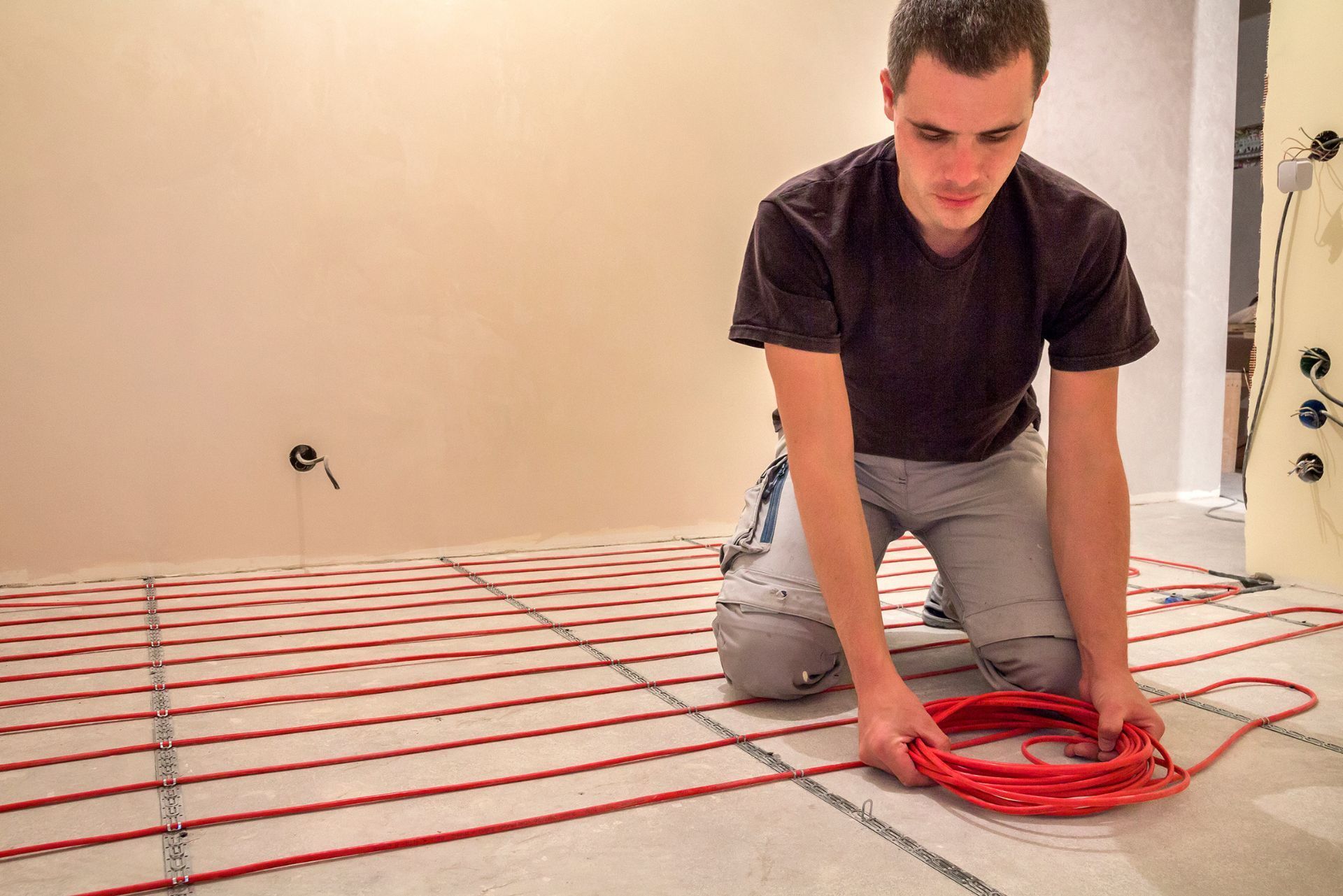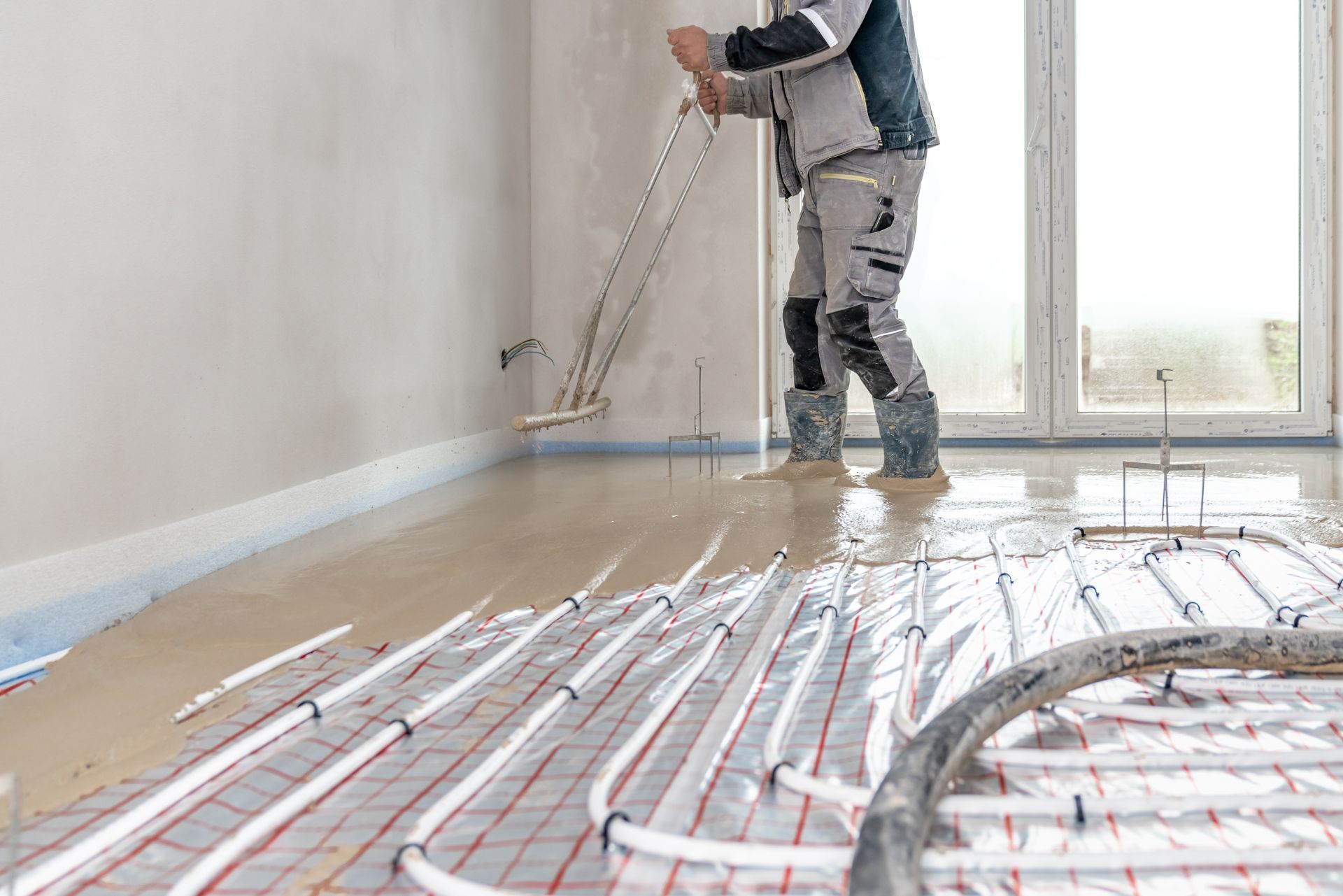Email us today!
Index
The Rise of Radiant Heating and Its Impact on Insurance Needs
Key Insurance Coverages for Michigan Radiant Heating Technicians
Why Michigan’s Insurance Environment Matters
Energy Efficiency and Radiant Heating’s Growing Appeal
Managing Risks Beyond Insurance
Insurance Cost Considerations for Radiant Heating Technicians
What Radiant Heating Technicians Should Look for in an Insurance Policy
Contact Us
Phone
(248) 647-2500
hello@oaklandinsurance.com
Location
8055 Ortonville Rd, City of the Village of Clarkston, MI 48348
Radiant heating has become a cornerstone of many Michigan heating businesses, driving significant growth in the HVAC industry. With radiant heating accounting for roughly 80% of some companies’ business and the fastest-growing segment in heating nationwide, technicians specializing in this field face unique risks and insurance needs. Understanding the insurance landscape for radiant heating technicians in Michigan is crucial to protect your business, your workers, and your bottom line.
For HVAC contractors and radiant heating specialists, the stakes are high. From the technical challenges of installation to potential property damage claims, having the right coverage is more than a formality—it’s a necessity. This article breaks down what radiant heating technician insurance looks like in Michigan, why it matters, and how it fits into the broader HVAC market.
Before diving deeper, it’s worth noting that the HVAC industry in Michigan faces a growing demand for skilled technicians. According to
Oakland Insurance, the average age of HVAC technicians is 44, and the U.S. requires about 75,000 new technicians annually to meet demand. This shortage adds pressure on businesses to retain talent and manage risks effectively.
The Rise of Radiant Heating and Its Impact on Insurance Needs
Radiant heating systems have seen remarkable growth in recent years. Industry experts like Ted Lowe of Lowe Energy Design highlight that radiant heating has experienced double-digit growth for eight consecutive years, making it the fastest-growing segment in the heating industry. This trend is echoed by reports of a 25% annual increase in the radiant heating market over the past four years, showing no signs of slowing down.
Such rapid expansion brings both opportunity and risk. Radiant heating installations often involve complex plumbing and electrical work beneath floors or within walls. Mistakes during installation can lead to costly water damage or system failures. In Michigan, urban areas have seen a 32% rise in water damage claims over the past decade, largely due to aging infrastructure and population growth, according to Oakland Insurance. For radiant heating technicians, this means a higher likelihood of claims related to water leaks or property damage.
Insurance policies tailored for radiant heating technicians must address these specific risks. General liability coverage, workers compensation, and equipment insurance are all critical. Because radiant heating is a specialized field, insurers often require detailed information about the types of systems installed and the technician’s experience level.
Additionally, the rise of smart home technology has further complicated the landscape for radiant heating systems. Many modern installations now integrate with home automation systems, allowing homeowners to control their heating remotely via smartphones or tablets. This trend not only enhances user experience but also introduces new layers of complexity in installation and maintenance. As a result, technicians must stay updated on the latest technological advancements and ensure that their insurance covers potential liabilities associated with these high-tech systems. The integration of smart technology can lead to unique risks, such as cybersecurity threats, which are becoming increasingly relevant in the insurance conversation.
Moreover, as more homeowners opt for eco-friendly heating solutions, radiant heating systems are often seen as a sustainable choice. These systems can be powered by renewable energy sources, such as solar panels, which can significantly reduce energy costs and carbon footprints. However, this shift towards sustainability also requires technicians to be well-versed in the intricacies of these systems, further emphasizing the need for specialized training and insurance coverage that reflects the evolving market. Insurers are starting to recognize the importance of green technologies, and policies may soon evolve to provide incentives for technicians who adopt environmentally friendly practices in their work.

Key Insurance Coverages for Michigan Radiant Heating Technicians
Understanding the types of insurance coverage needed is essential for radiant heating technicians operating in Michigan. Here are the primary coverages to consider:
General Liability Insurance
This coverage protects against claims of bodily injury or property damage caused by your work. For radiant heating technicians, this might include damage to a client’s home due to a water leak or accidental fire during installation. Given the complexity of radiant systems, liability claims can be costly without proper coverage. Furthermore, general liability insurance can also cover legal fees and settlements should a client decide to pursue a lawsuit, which can be a significant financial burden for small businesses.
Workers Compensation Insurance
Michigan requires most employers to carry workers compensation insurance. For HVAC contractors, the cost typically averages around $139 per month per worker based on a rate of $3.31 per $100 of payroll, according to Kickstand Insurance. This coverage is vital to protect your employees if they suffer injuries on the job, which can happen frequently in physically demanding trades like radiant heating installation. In addition to covering medical expenses, workers compensation can also provide wage replacement for employees who are unable to work due to their injuries, ensuring their financial stability during recovery.
Equipment and Tools Insurance
Radiant heating technicians rely on specialized tools and equipment. Insurance that covers theft, loss, or damage to these assets can save your business significant replacement costs. This coverage is especially important given the investment required for radiant heating installation tools. Moreover, having this insurance can provide peace of mind, allowing technicians to focus on their work without the constant worry of potential equipment loss, which can disrupt project timelines and lead to dissatisfied customers.
Professional Liability Insurance
Also known as errors and omissions insurance, this coverage protects against claims arising from mistakes or negligence in your professional services. While radiant heating may be a small portion of some businesses’ direct sales, as noted by Joel Boucher of Boucher Energy Systems, the technical expertise required means errors can have serious consequences. This type of insurance not only safeguards against financial loss due to claims but also enhances your credibility with clients, demonstrating that you take your professional responsibilities seriously and are prepared for unforeseen challenges that may arise during installations.
Why Michigan’s Insurance Environment Matters
Michigan’s regulatory and legal landscape has a direct impact on insurance costs and coverage options. Recently, a controversial piece of legislation concerning “bad faith” insurance practices has resurfaced in the Michigan Senate. This has raised alarms among businesses and consumers alike about potential premium hikes and increased litigation risks, as reported by the Michigan Council of Self-Insured Group Administrators.
For radiant heating technicians, this means insurance premiums could rise, and claims processes may become more complex. Staying informed about legislative changes is crucial to maintaining adequate coverage without overpaying.
Additionally, Michigan’s climate and aging infrastructure contribute to specific risks. The state’s cold winters increase demand for reliable heating systems, while older buildings may pose challenges during installation, increasing the chance of accidental damage. Insurance policies should reflect these local factors to provide meaningful protection.
Moreover, the interplay between state regulations and local market dynamics can create a unique environment for insurance providers. For instance, Michigan's no-fault auto insurance system has historically influenced how other types of insurance are structured, leading to distinct pricing models and coverage options that may not be found in other states. This creates a complex web of considerations for both consumers and providers, necessitating a thorough understanding of how these regulations affect overall risk assessments and premium calculations.
Furthermore, the growing emphasis on sustainability and energy efficiency in Michigan’s construction and renovation projects is reshaping the insurance landscape. As more homeowners and businesses invest in green technologies, such as energy-efficient heating systems or solar panels, insurers are beginning to adapt their policies to account for these advancements. This shift not only reflects a broader trend towards environmental responsibility but also introduces new variables in risk management that can significantly influence insurance rates and coverage terms.
Energy Efficiency and Radiant Heating’s Growing Appeal
One of the key drivers behind radiant heating’s popularity is its energy efficiency. The Department of Energy estimates that radiant heating systems can reduce homeowners’ energy bills by 5 to 30%, depending on the system and usage patterns. This efficiency aligns with growing sustainability goals in Michigan and nationwide. As energy costs continue to rise, homeowners are increasingly looking for solutions that not only cut down on expenses but also minimize their carbon footprint. Radiant heating systems, which distribute heat evenly across floors and walls, provide a comfortable living environment while consuming less energy compared to traditional heating methods.
For technicians, this means more customers are seeking radiant heating solutions, expanding business opportunities. However, it also means installers must stay updated on evolving technologies and standards to meet customer expectations and comply with regulations. The integration of smart home technology into radiant heating systems is one area where technicians can enhance their service offerings. By incorporating programmable thermostats and mobile app controls, homeowners can optimize their heating schedules, further increasing energy savings and comfort. As the market evolves, technicians who embrace these innovations will not only attract more clients but also position themselves as leaders in the industry.
Given the technical demands and rapid growth, insurance providers often view radiant heating contractors as specialized risks. This can impact policy terms and premiums, making it important for technicians to work with insurers familiar with radiant heating’s nuances. Understanding the unique challenges associated with installation and maintenance can help contractors secure better coverage options. Additionally, as radiant heating systems become more prevalent, the potential for liability claims may rise, underscoring the importance of comprehensive insurance that addresses these specific risks.
Learn more about radiant heating market trends from Supply House Times.
Moreover, the rising interest in radiant heating is also fueled by its versatility in various applications, from residential homes to commercial spaces. In new construction, radiant heating can be seamlessly integrated into the design, offering architects and builders an opportunity to create energy-efficient buildings that meet modern standards. Retrofitting existing structures with radiant systems is also gaining traction, as homeowners look to upgrade their heating solutions without compromising aesthetics. This adaptability not only enhances comfort but also increases property value, making radiant heating an attractive investment for many.
As consumers become more educated about their heating options, the demand for radiant heating solutions is expected to continue its upward trajectory. Educational initiatives and workshops aimed at informing homeowners about the benefits and workings of radiant heating can further drive interest. By fostering a better understanding of how these systems operate and their long-term advantages, technicians can empower potential customers to make informed decisions, ultimately leading to a more sustainable future in home heating.

Managing Risks Beyond Insurance
Insurance is a critical safety net, but proactive risk management can reduce claims and improve business sustainability. For radiant heating technicians, this includes:
- Proper Training: Ensuring all technicians are well-trained on the latest radiant heating technologies and installation best practices.
- Quality Control: Implementing thorough inspection and testing procedures to catch issues before they become costly problems.
- Clear Contracts: Using detailed service agreements that outline scope, responsibilities, and liabilities to minimize disputes.
- Regular Equipment Maintenance: Keeping tools and machinery in good working order to prevent accidents and delays.
These steps not only protect clients but also help keep insurance claims to a minimum, which can positively affect premiums over time.
Insurance Cost Considerations for Radiant Heating Technicians
Insurance costs vary based on several factors, including business size, payroll, claims history, and the specific services offered. In Michigan, HVAC contractors typically pay around $139 monthly per worker for workers compensation insurance, but this can fluctuate depending on risk factors.
Radiant heating’s rapid growth and technical complexity may lead insurers to charge higher premiums compared to more general HVAC work. However, businesses that demonstrate strong safety records and risk management practices can often negotiate better rates.
Technicians should also consider bundling multiple coverages or working with brokers who specialize in HVAC insurance to find the best value and protection.
What Radiant Heating Technicians Should Look for in an Insurance Policy
When selecting insurance, radiant heating technicians should ensure their policies include:
- Coverage for Water Damage: Given the risk of leaks and flooding during installation, coverage for water-related property damage is essential.
- Broad Liability Limits: Adequate limits to cover potential lawsuits or claims, especially since radiant heating involves installation in occupied homes.
- Workers Compensation Compliance: Meeting Michigan’s legal requirements to protect employees and avoid penalties.
- Equipment Protection: Coverage for tools and machinery used daily on the job.
- Claims Support: Access to responsive claims handling and legal support in case of disputes.
Choosing an insurer with experience in radiant heating and HVAC can make a significant difference in policy terms and service quality.
Frequently Asked Questions
Q: Is workers compensation insurance mandatory for radiant heating technicians in Michigan?
A: Yes. Michigan law requires most employers to carry workers compensation insurance to cover workplace injuries.
Q: How does radiant heating impact insurance premiums compared to general HVAC work?
A: Radiant heating can increase premiums due to the specialized installation risks, especially related to water damage and technical complexity.
Q: Can radiant heating systems reduce energy costs for homeowners?
A: Yes. According to the Department of Energy, radiant heating can save homeowners between 5 and 30% on energy bills.
Q: What are the main risks radiant heating technicians face on the job?
A: Common risks include water leaks, property damage, employee injuries, and equipment loss or damage.
Q: How can radiant heating contractors manage insurance costs?
A: Maintaining strong safety protocols, proper training, and working with specialized insurers can help manage premiums.
Wrapping Things Up
Radiant heating technicians in Michigan operate in a dynamic and growing market. With the sector expanding rapidly, the need for tailored insurance coverage is more important than ever. From general liability to workers compensation and equipment protection, the right insurance safeguards your business against the unique risks that come with radiant heating installation.
Understanding Michigan’s legal environment and the specific challenges of radiant heating will help technicians make informed decisions about coverage. Staying proactive with risk management and working with knowledgeable insurers ensures your business can thrive while protecting your employees and customers.
For those in the radiant heating field, insurance is not just a regulatory requirement—it is a strategic asset that supports growth and stability in a competitive market.
REQUEST A QUOTE
Speak with a radiant heating technician insurance specialist today!
Get started today!
Prefer to speak with an agent now?







